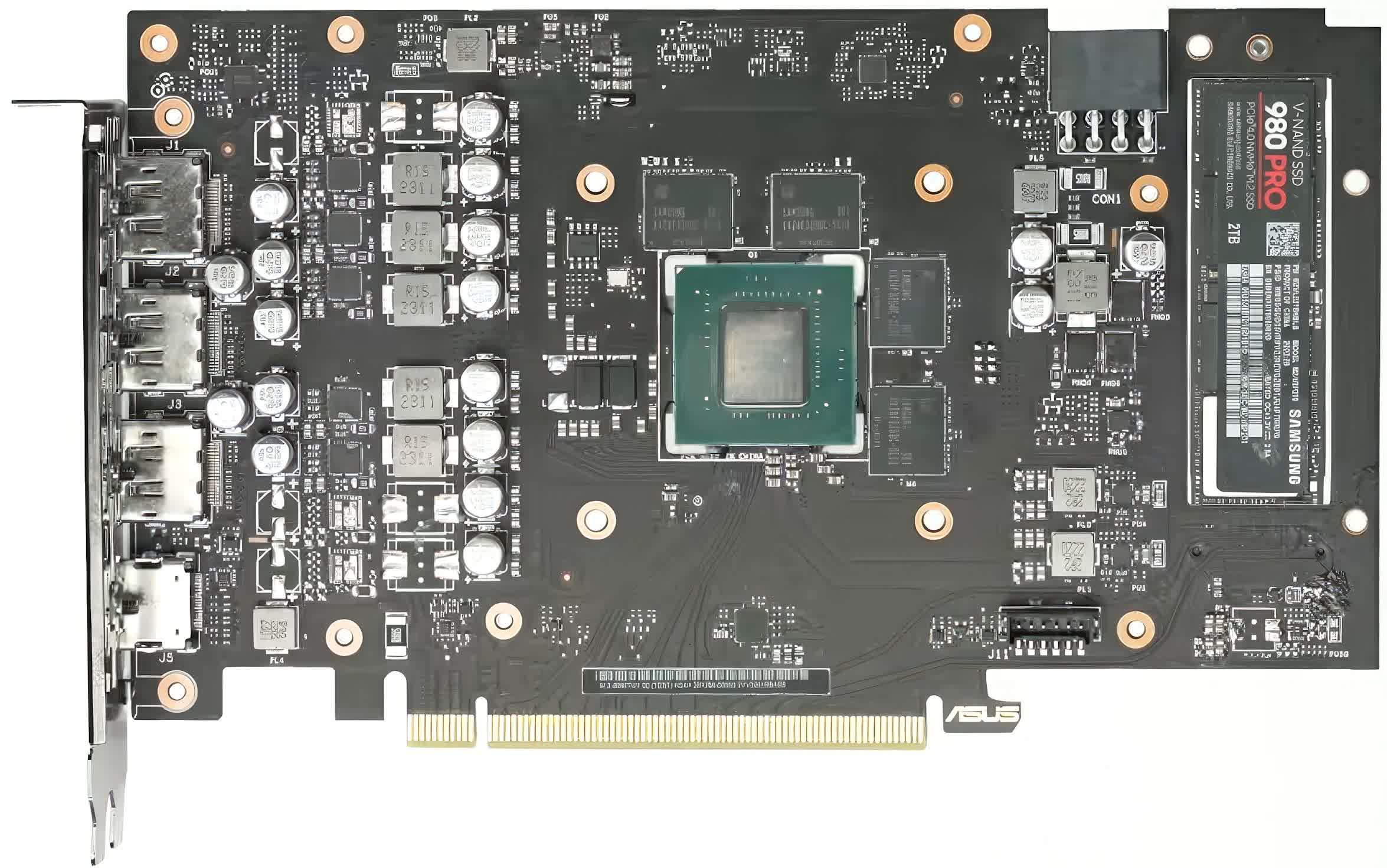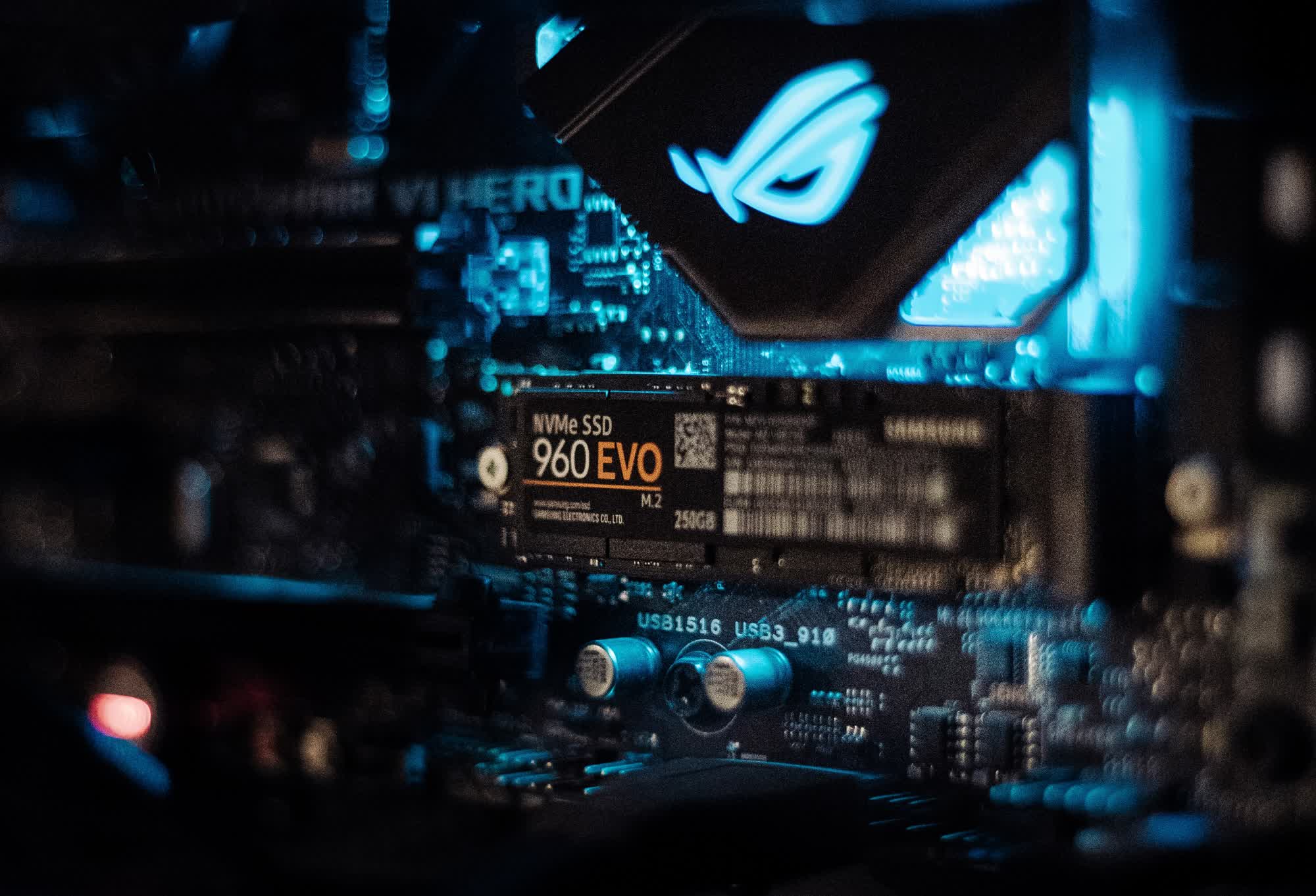In brief: Asus is reportedly preparing to launch a graphics card with an integrated storage solution. Over the summer, Asus demonstrated a prototype RTX 4060 Ti graphics card sporting an M.2 2280 SSD slot on the rear. The presentation was in Chinese which makes translation difficult but according to VideoCardz, Asus figured out how to allocate some unused PCIe lanes for SSD support.
Per the publication, the design allows the solid-state drive to leverage the GPU's heatsink and fan array for improved cooling – convenient considering modern SSDs can get quite toasty and are susceptible to thermal throttling. The demo showed the GPU's cooler was able to lower the SSD's operating temperature by 10 degrees C, presumably compared to a drive plugged into a motherboard slot with no added cooling.
VideoCardz believes Asus is prepping two versions of the RTX 4060 Ti DUAL: one sporting standard clock speeds and another that will be factory overclocked. No word yet on when they might be ready to launch, which regions (besides Russia) might get them first, or how much they will cost. It's also unclear if the card will have the SSD slot on the front or the rear (or maybe it'll have dual ports, hence the dual name?).


It is an interesting concept for sure, but is it poised to be the next big thing in GPU technology?
Some may argue that Asus' solution does not really solve a problem or meet a need. Motherboards already have SSD ports, so why not just utilize them as intended? Why complicate things with unnecessary complexity? What happens if you change video cards – can you simply move the SSD from the video card to a traditional port without issue, or will you face potential data corruption? Will the solution work on any modern motherboard or will compatibility be limited to Asus boards?
Something else to consider is the fact that adding an SSD to the video card is going to heighten its power draw (not by much, mind you, but it is still something to be aware of).
Image credit: Behnam Norouzi
